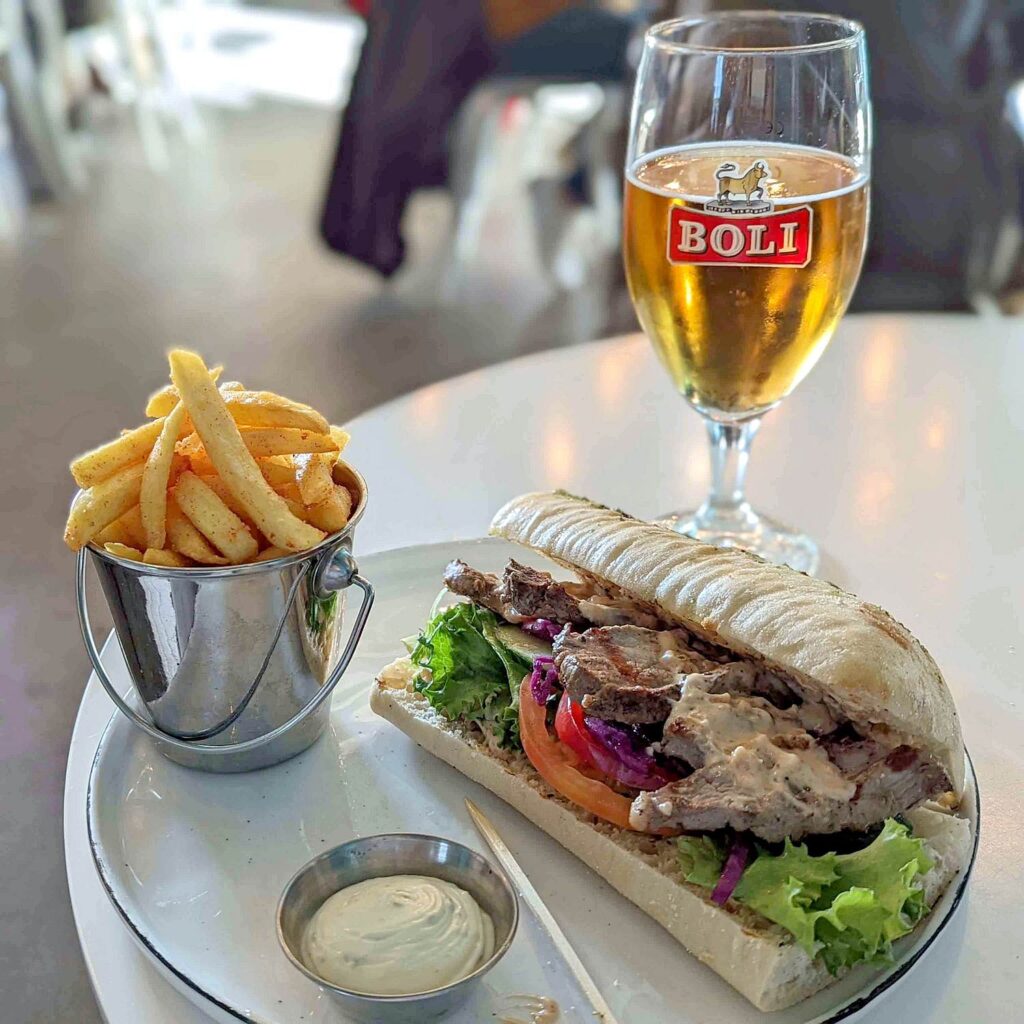
Everything old is new again in Reykjavik, not least the ‶Old Harbor″ district. Just a two-minute walk along the harbor from the oldest city restaurant, Kaffivagninn (see this post), the soaring interior of Grandi Maðöll (Grandagarður 16; +354 787 6200; grandimatholl.is) beckons diners hungry for an indoor fix of street food with a good harbor view. In case you hadn’t guessed, maðöll is Icelandic for ‶food hall.″ (The ‶eth″ is pronounced like a ‶th″ in English and is often spelled that way as well.)

Grandi Maðöll is one of the city’s newer dining ventures. It contains eight food vendors offering mainly Icelandic foods, such as fish and chips, as well as two world cuisines popular in food courts everywhere: Italian pastas and Indian curries. In keeping with the ‶street food″ branding, all the dishes are pretty casual.
Even Icelanders don’t get all their protein from the sea. The Vikings introduced sheep more than a millenium ago. That Icelandic breed is considered the oldest pure sheep breed in Europe. The island has about 370,000 humans — and 500,000 sheep. Their thick, dual-layered fleece makes famous Icelandic sweaters. Some farmers milk the ewes, mainly for making cheese. Lamb is Iceland’s most common meat.
At Grandi Maðöll, Fjárhúsið (+354 792 7575) specializes in Icelandic lamb as well as lamb bacon. In fact, the name of the bar/restaurant means ‶sheep barn,″ and its symbol is a ram’s head. The menu consists of lamb burger, lamb stew, lamb chops, lamb pita, and lamb skewers. (Diehard beef fans can also get a beef burger.) We couldn’t resist the grilled lamb sandwich with lamb bacon and grilled tomatoes. Abundant geothermal energy allows Icelandic farmers to a surprisingly array of subtropical vegetables like tomatoes and peppers.
The sandwich was delicious, especially with a glass of locally brewed Boli lager. We weren’t quite sure what to expect, since ‶lamb″ in many spots around the globe can be more like mutton. But this lamb was richly flavored without any of the gaminess or waxy texture of mutton. And given that Icelandic sheep are free range grazers and never receive grain to fatten them up, the meat was toothy but very tender. At $19 USD (2700 Icelandic krona), it was a tasty bargain.
